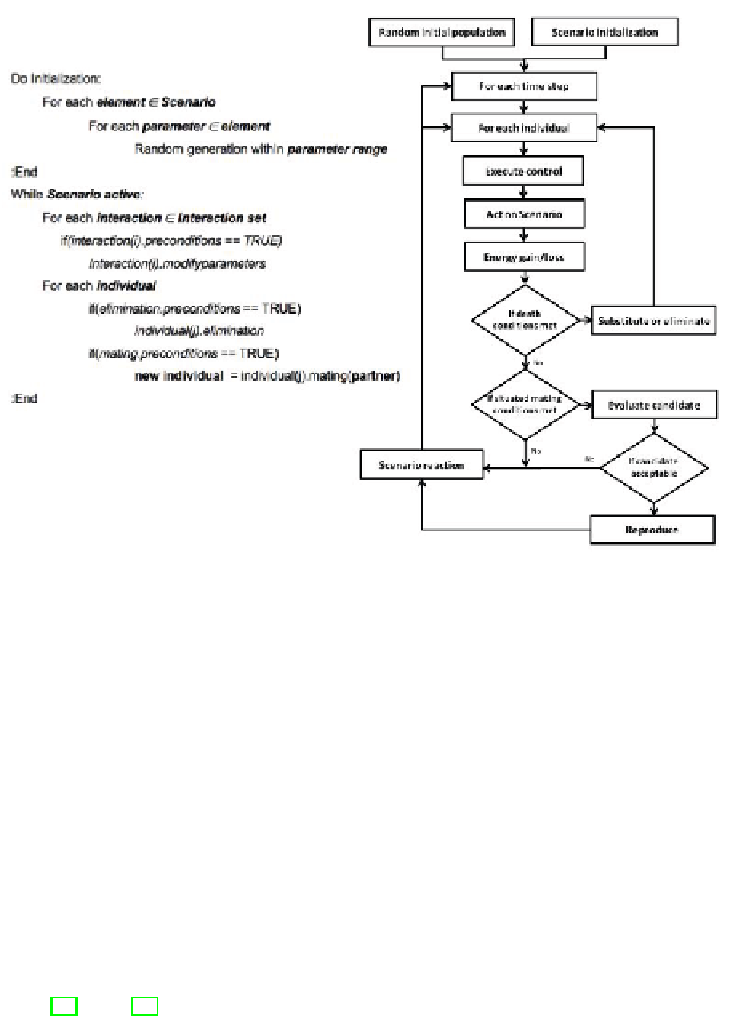Information Technology Reference
In-Depth Information
Fig. 1.
ASiCo pseudo code (left) and general structure (right)
extinct. In any other case, the individuals will be autonomously organized into
species as required by the task, reaching the optimal solution or a suboptimal
one. What must be pointed out here is that there is no bias in the algorithm
that establishes the heterogeneity of the population, and such a distribution will
depend only on the task characteristics, like in a natural evolutionary system.
Obviously, homogeneous populations are possible too.
Self-organization is continuous in ASiCo, and once a stable state is achieved,
if something changes in the environment or in the task definition, the population
will adapt to the new conditions or become extinct. This adaptation implies a
very interesting property of this algorithm because distributing the individuals
into species implies an autonomous capacity for finding how many are required
of each type. Most real problems are dynamic, but to a degree that requires a
fast adaptation method in terms of redistributing the individuals between roles
or specialties in real time, and not so much in terms of creating new species.
In [10] and [11], heterogeneous populations were obtained with ASiCo but in
both cases there was a spatial separation in the scenario between the constitutive
elements of the tasks, creating different areas in the environment where individ-
uals could evolve separately, and thus, achieve specialization. In this work, we
have defined a collective task where such spatial separation does not exist, and
where the individuals are in continuous interaction.

Search WWH ::

Custom Search